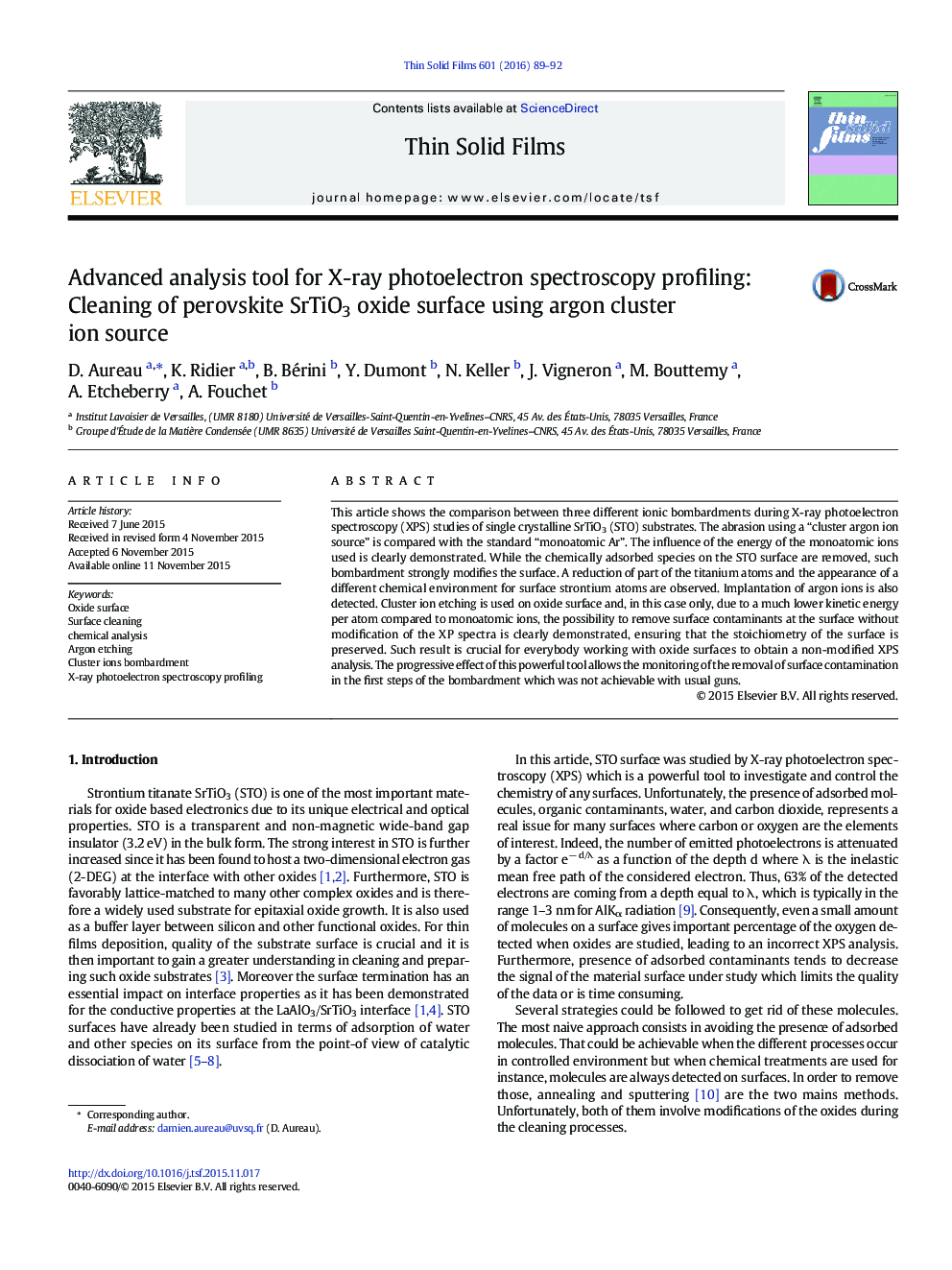| Article ID | Journal | Published Year | Pages | File Type |
|---|---|---|---|---|
| 1664100 | Thin Solid Films | 2016 | 4 Pages |
•The effects of three argon etchings are studied as a function of time on SrTiO3 oxide.•A method for obtaining non-modified chemical analysis of oxides is presented.•The soft removal of adsorbed species thanks to argon cluster is demonstrated.•The damages induced on SrTiO3 surface by ionic bombardment are shown.•The influence of the kinetic energy of incoming Ar atoms is examined.
This article shows the comparison between three different ionic bombardments during X-ray photoelectron spectroscopy (XPS) studies of single crystalline SrTiO3 (STO) substrates. The abrasion using a “cluster argon ion source” is compared with the standard “monoatomic Ar”. The influence of the energy of the monoatomic ions used is clearly demonstrated. While the chemically adsorbed species on the STO surface are removed, such bombardment strongly modifies the surface. A reduction of part of the titanium atoms and the appearance of a different chemical environment for surface strontium atoms are observed. Implantation of argon ions is also detected. Cluster ion etching is used on oxide surface and, in this case only, due to a much lower kinetic energy per atom compared to monoatomic ions, the possibility to remove surface contaminants at the surface without modification of the XP spectra is clearly demonstrated, ensuring that the stoichiometry of the surface is preserved. Such result is crucial for everybody working with oxide surfaces to obtain a non-modified XPS analysis. The progressive effect of this powerful tool allows the monitoring of the removal of surface contamination in the first steps of the bombardment which was not achievable with usual guns.
